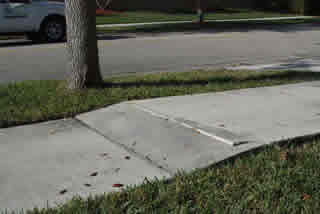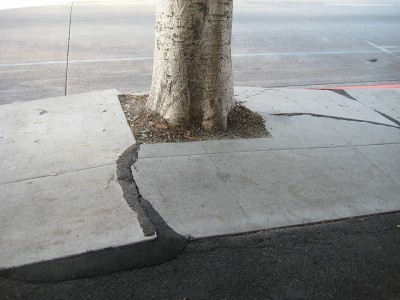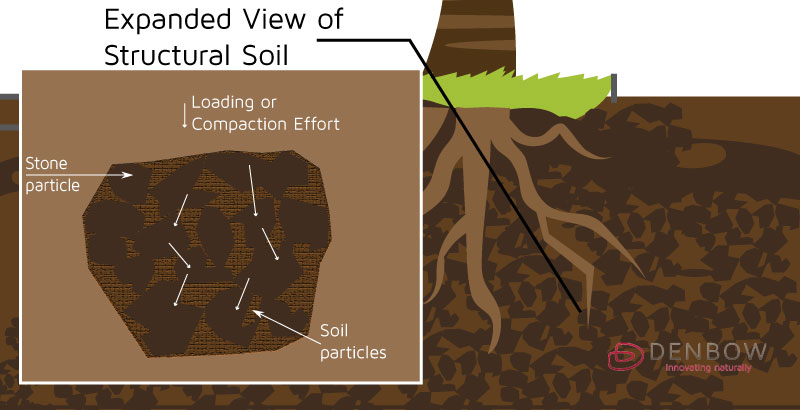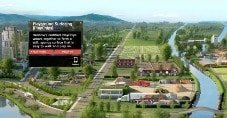Often compaction develops around urban trees through pedestrian or vehicular traffic ways. The weight of sidewalks and driveways can radiate the effects of compaction to the surrounding area, affecting the root growth of nearby trees. When the soil compaction is beginning to take its toll, tree roots will begin to grow upwards, seeking oxygen and nutrients. Once this occurs, the infrastructure is damaged and corrective options are limited.
One technique that has proven to provide some relief is known as “vertical mulching” or “vertical trenching.” This technique operates under the assumption that increased air penetration into the soil creates a microclimate of oxygen to support root health.
At Denbow we agree with this statement since we offer structural soil as the best practice for healthy trees planted in urban pedestrian and vehicle traffic ways.
Here’s how vertical trenching works:
- Have utilities marked in the area surrounding the tree(s) to be trenched. To make the process as safe as possible, make sure the trencher penetrates fairly deeply, avoiding any power, gas or water lines.
- Determine which material you will use to backfill the trench. There is some debate about the best choice, but one study shows that structural soil is the best alternative as it allows for growth space, and air and nutrients are easily found by the roots.
- The trenches should begin 10 feet away from the trunk and radiate outward. There is no set recipe for length or depth of the trench. Some projects call for trenches to be dug 10 feet long × 2 feet deep × 4 inches wide; others call for trenches anywhere from 4 to 24 inches wide and 12 to 18 inches deep. Follow the direction of the engineer.
- Work slowly to avoid cutting roots larger than 1 inch in diameter.
- Backfill the trenches with the structural soil or the material of your choice, then mulch and water around the area. If you choose to fertilize, use a balanced fertilizer.
- The process does not remove large quantities of soil compared to the root zone itself. For instance, the area under a tree that is 20 feet wide, 20 feet long and 2 feet deep would have a soil volume equal to 800 cubic feet. Trenching 10 feet long by 4 inches wide by 2 feet deep would remove/loosen/treat 6.7 cubic feet of soil. If you dug five trenches around the tree, the volume would equal 33 cubic feet or 4 percent of the total volume.

Could vertical trenching save the tree? Chances are that an increase in localized oxygen and an improved microenvironment for root development may be the boost that a compaction-damaged tree needs to survive.
But… there is a better way!
THE BETTER ALTERNATIVE – STRUCTURAL SOIL FIRST
You can avoid the need to rely on labor-intensive processes like vertical trenching by investing in preventative measures at the time of planting. By planting into specially engineered structural soil instead of regular soil, urban trees are able to take advantage of superior water usage and increased oxygen availability even beneath the pavement nearby – a smart and economical long term solution for urban tree growth.
Denbow’s unique StructureZone structural soil combines gap graded rock, quality soil, and an effective stabilizing compound. This mix is designed to bear the weight of the pavement above while the shape of the graded rock provides space for air and root expansion, allowing nearby urban trees to thrive without the threat of compaction. This allows urban trees to remain strong, healthy, and attractive for years to come.




